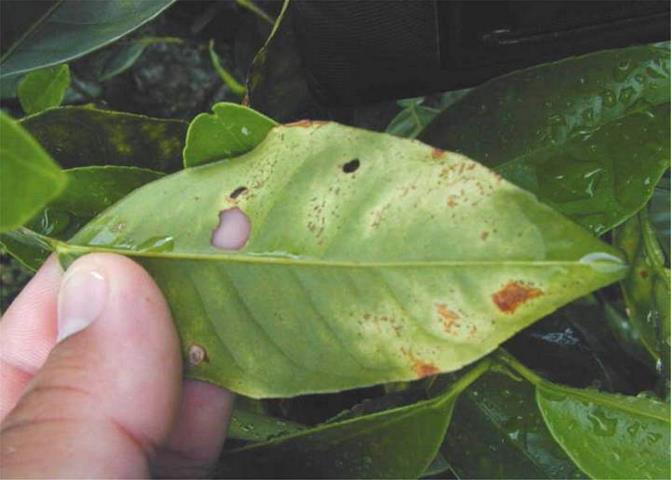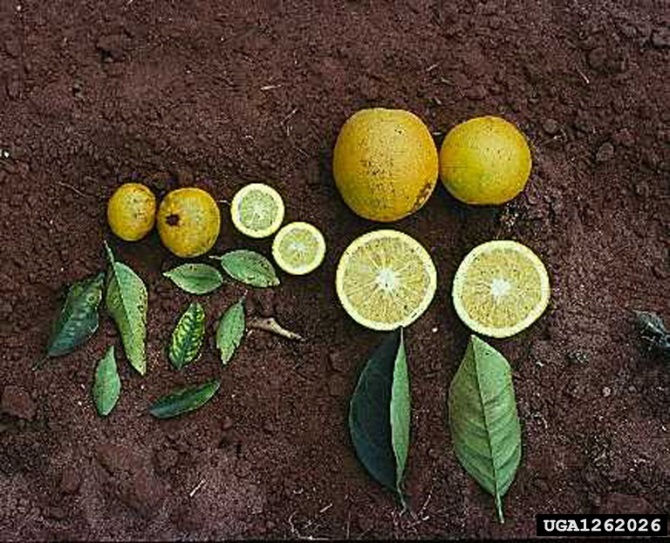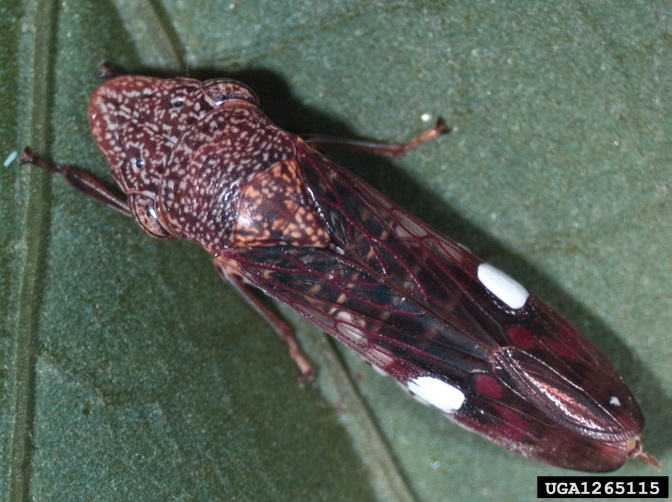
Citrus variegated chlorosis
| Primefact number | Edition | Published | Author |
|---|---|---|---|
| 1500 | First | Nov 2016 | Plant Biosecurity and Product Integrity |



Citrus variegated chlorosis (Xylella fastidiosa) is an exotic plant pest not present in Australia. This disease is a serious threat to Australia’s citrus industry.
Citrus variegated chlorosis is caused by the bacterium Xylella fastidiosa. The bacterium lives and multiplies in the sap of citrus plants, blocking water uptake.
Sap feeding insects spread the disease between plants. Once a plant is infected there is no treatment other than to remove infected limbs or whole trees to try and prevent spread.
Xylella fastidiosa is responsible for a number of diseases in other horticultural crops, including Pierce’s disease of grapevine, leaf scorch of tree nuts, and phony peach disease. No strains of Xylella fastidiosa are present in Australia.
Notifiable status
Citrus variegated chlorosis (Xylella fastidiosa) is a notifiable plant disease in NSW.
All notifiable plant pests and diseases must be reported within 1 working day. You can report notifiable plant pests and diseases by one of the following methods:
- Call the Exotic Plant Pest Hotline 1800 084 881
- Email biosecurity@dpi.nsw.gov.au with a clear photo and your contact details
- Complete an online form
A full list of notifiable plant pests and diseases can be found in Schedule 2 of the NSW Biosecurity Act 2015.
Description
The first sign of a citrus variegated chlorosis infection is a yellowing between veins on the upper surface of leaves, resembling zinc deficiency. As young leaves mature, light brown, slightly raised lesions develop on the underside of the leaf, directly opposite the yellow areas on the upper side (Figure 1). These lesions continue to develop becoming dark brown or even necrotic.
Newly infected trees show symptoms in isolated parts of the canopy. Trees with older infections show uniform symptoms throughout the canopy.
Younger trees succumb to infection much faster than older trees. Trees more than 8-10 years old are rarely severely affected, but can develop symptoms on the extremities of branches.
Damage
The presence of X. fastidiosa in the plant sap restricts flow of water and nutrients in the tree.
There is no known treatment for citrus variegated chlorosis once trees become infected. Affected trees show stunting and slow growth rate.
Infected trees produce significantly smaller fruit with a higher sugar content and harder rind (Figure 2).
Twigs and branches die back and the canopy thins, but affected trees do not die.
Spread
Xylella fastidiosa bacteria are carried in the sap of host plants and can be spread between plants by grafting, pruning or sap feeding insect vectors.
The most efficient known vector is the glassy winged sharpshooter (Figure 3). Glassy winged sharpshooter is not currently found in Australia. It is possible that natural insect vectors of this disease may already exist in Australia.
Introduction of the disease to Australia could occur with human assisted movement of infected plant material or with insect vectors. The disease is not spread by seed.
Distribution
Xylella fastidiosa is native to the Americas and has spread to Europe where there have been recent detections in Italy and France. It is also present in the Caribbean, Taiwan, Iran, Turkey, Lebanon and Kosovo. Presence in India and Morocco is unconfirmed.
Alternative hosts
Many common weeds including bermuda grass, rye, fescue, watergrass, blackberry, cocklebur and nettle are hosts of X. fastidiosa and can act as reservoirs of disease.
Common orchard weeds such as bluegrass, burclover, cheeseweed, chickweed, filaree, London rocket, and shepherd's purse have also been found to be infected overseas.
Actions to minimise risk
Put in place biosecurity best practice actions to prevent entry, establishment and spread of pests and diseases:
- practice “Come clean, Go clean”
- ensure all staff and visitors are instructed in and adhere to your business management hygiene requirements
- monitor your orchard regularly
- monitor and control weeds that can harbour both the disease and its vectors
- source plant material of a known high health status from reputable suppliers
- keep records

